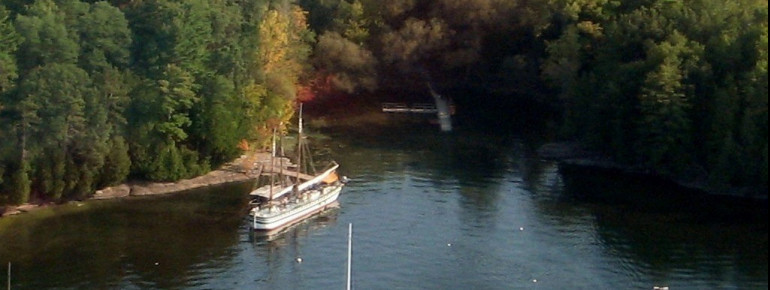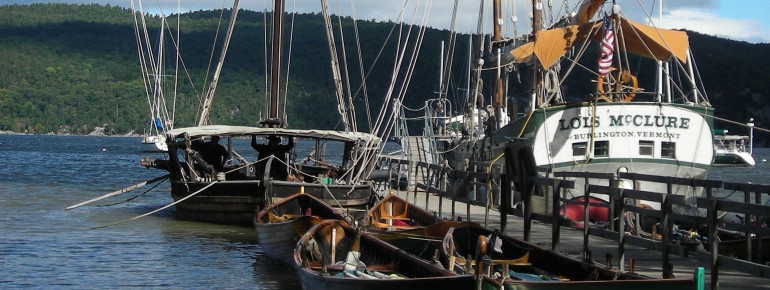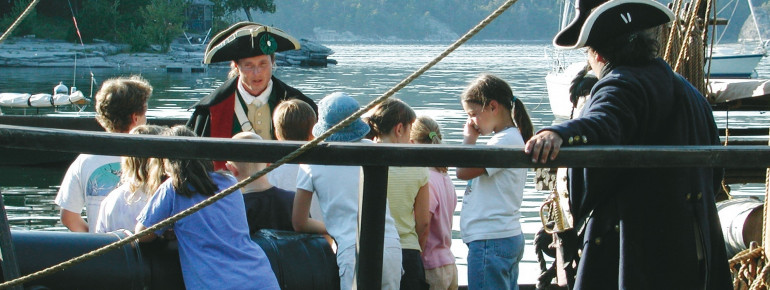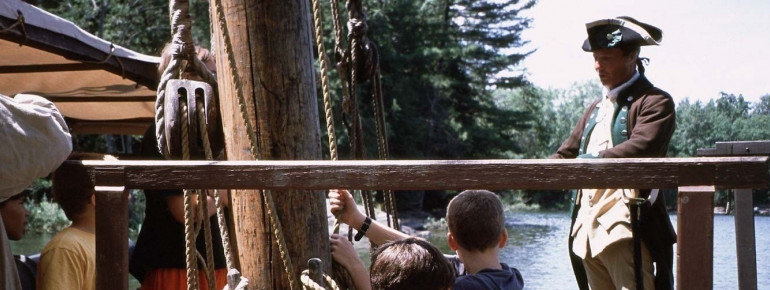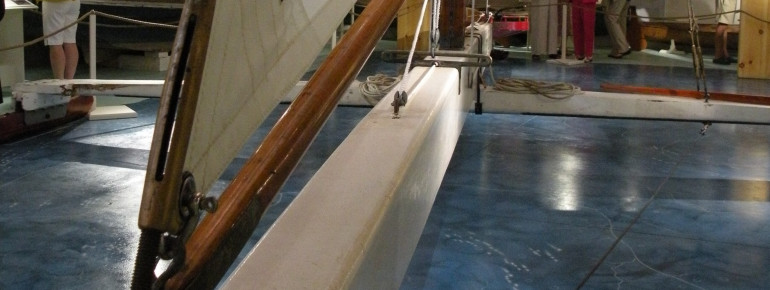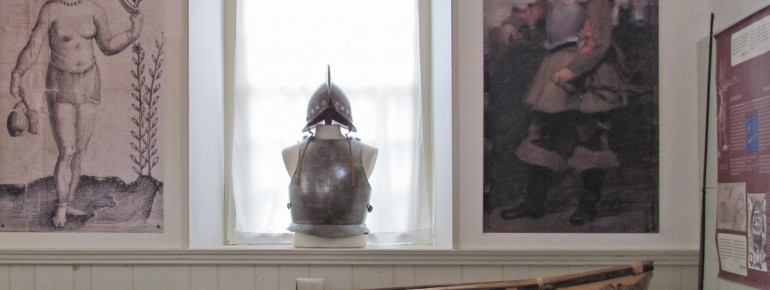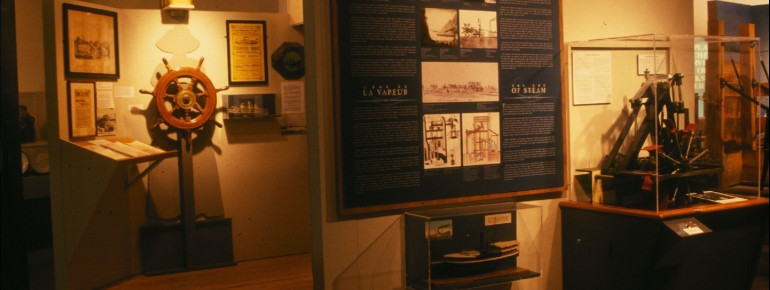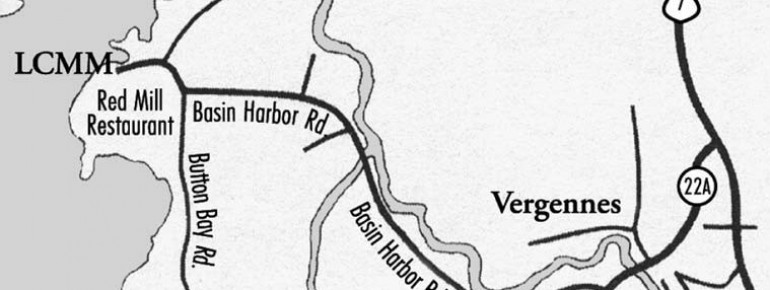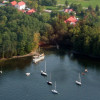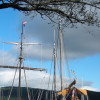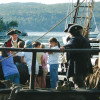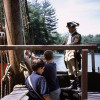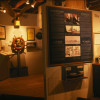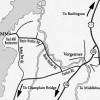Contents
Description
Offers for adults and children
As the name of the museum already indicates, the museum focuses on the history of Lake Champlain and its usage for maritime traffic. What may come across as unspectacular is in truth done so lovely and interesting. The museum is definitely worth a visit. Being by the lake, it's a fantastic chance to combine swimming and paying a visit to the museum with the whole family. changed
A giant in the museum
The heart of the museum is the so-called Hazelett Center that especially has laid its focus on the exhibition of historical and current vessels. One may have a look at the impressive ice yacht “Storm King”, which actually displays quite an astonishing length of 11m (12yd). Around this wooden giant, one finds several canoes and kayaks as well as restored rowing boats, which have enriched the museum's range of samples immensely in the course of time and thus offering a huge variety on exhibits. The exhibition does not only draw a picture of vessels, but also documents how they were actively used on Lake Champlain. Here one gets to see venerable exhibition samples on the one hand, but on the other one gets the chance to go on a historical journey on the lake as well as to its past.
Along the way above and under the lake
In its past, Lake Champlain did not only accommodate a number of historical vessels, but moreover took a bunch of sailors and their boats down to the ground of the lake. Deep down, there are more than 300 historical shipwrecks. Due to this, Lake Champlain has earned itself a historic reputation within the North American hemisphere. In the Nautical Archaeology Center of the Maritime Museum, regional archaeologists have come together to study interesting samples of wrecks and remains of vessels. A very individual story is told here as are the samples. There was, for instance, a ship driven by horse power only. One will find old steamers on the lake as well, but with all their splendour and sprawling decoration they often caught fire or suffered heavily from storms. Fortunately, some artefacts were even saved from the wrecks, nowadays perfectly complementing the theoretical part.
The key to freedom
As the Martime Museum represents Lake Champlain in all its variety and glory, the historical happenings around the lake must not be neglected. The exhibition “Key to Liberty”, for instance, mainly portraits the battle of Valcour Island in 1776. In this regard a fight took place between a fleet and a British Royal Navy on lake Champlain. This part of the museum informs the visitors about all details concerning this battle. There are also a gun ship, several maps, photographs, and eyewitness reports to be explored, so that one has the chance to relive history. Particularly children will love being here and playfully discover the museum's interactive learning hubs.
Indigenous Culture
On-site, there is a schoolhouse where one can learn more about the people who settled around Lake Champlain. The traditions and local circumstances are presented in the “Contact of Cultures” exhibition, perfectly rounding off the general impression of the Maritime Museum. One benefits from a visit here immensely, receiving an abundance of information and a variety of exciting samples. After or before paying a visit to the museum, one can enjoy oneself by the riverside and spend a wonderful day with the whole family.
How to get there
By car
Coming from Bulington
First take Route 7 and afterwards change to Route 22A in the direction of Vergennes. Cross the city and pass the bridge. Having arrived at Panton Road, turn right and follow the street for about 1.6km (1mi). Then turn into Basin Harbor Road and follow the road for about 10km (6mi) until you get to see the museum appearing on your right-hand side.
Coming from Boston
First take Interstate 93, change to Interstate 89 and exit at Woodstock. Follow Route 4 until you get to Route 22A and carry on towards the north for almost 65km (40mi) in the direction of Vergennes. Having arrived at Panton Road, turn right and follow the street for about 1.6km (1mi). Then turn into Basin Harbor Road and follow the road for about 10km (6mi) until you get to see the museum appearing on your right-hand side.
Coming from Montreal
If you start your trip to the museum from Montreal, first take Route 10 in the direction to the Champlain Bridge. Afterwards continue on Route 133 until you get to the border of Vermont. Here you change to Interstate 89 leading towards the south until you reach exit 13. Keep driving on Route 7 until you can exit at Vergennes, which you will also have to cross. Shortly after you will have passed the bridge, turn into Panton Road and stay on it for about 1.6km (1mi). Keeping towards the right on Basin Harbor Road you will get to see the museum after a few kilometres/ miles.
Coming from New York
First take the highway leading towards Albany. Keep driving until you get to exit 24. Change onto the Interstate 87. Take exit 28. Then turn right onto Route 74. You will soon get to the junction 9N. This is where you turn left and continue to Champlain Bridge at Crown Point. You will have entered the federal state of Vermont here. Continue on Route 17 until you get to Route 22A. Here you turn left in the direction of Vergennes. You leave a cemetery behind on your left driving on Panton Road. Follow this road for about 1.6km (1mi) and turn into Basin Harbor Road. Carry on until you reach the museum, which is on your right-hand side.

